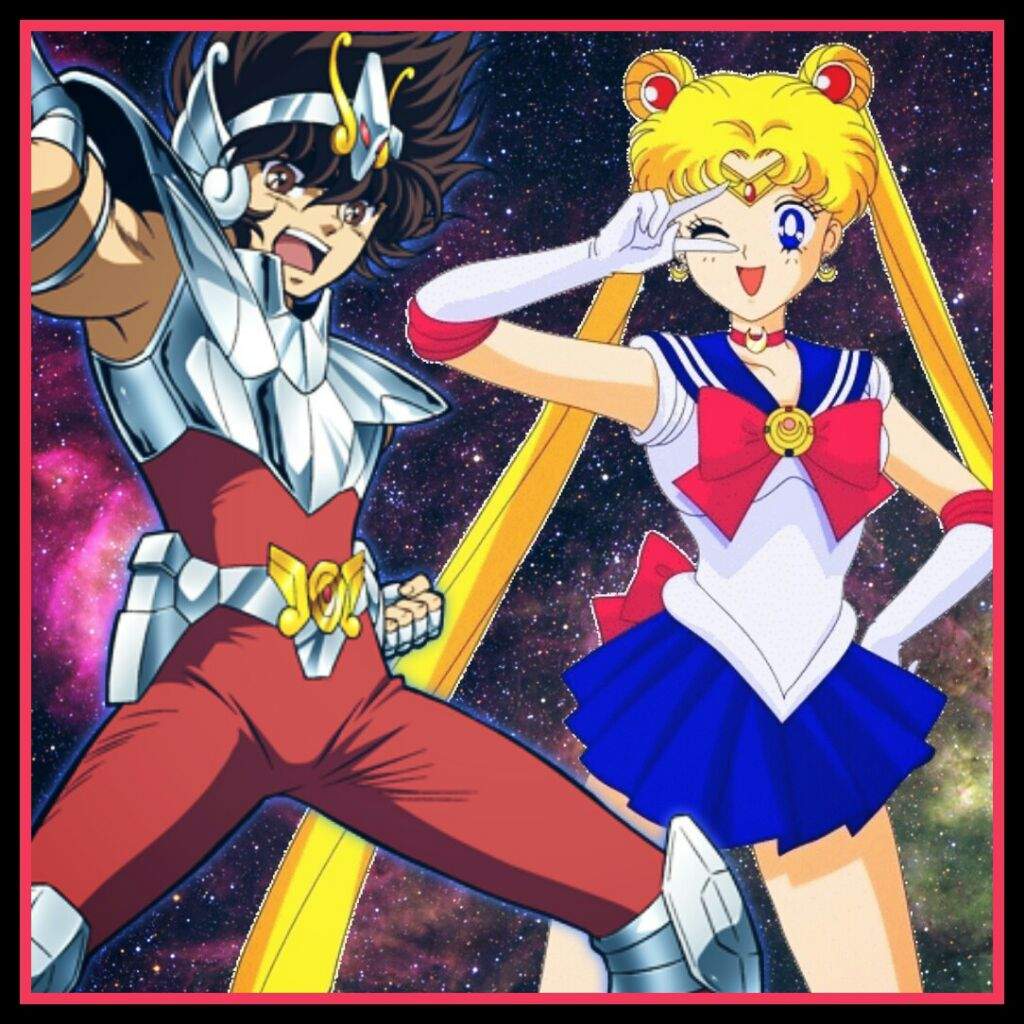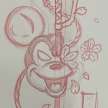A Comparative Analysis of Sailor Moon and Saint Seiya
Exploring Themes, Characters, and Cultural Impact of two iconic Animes of all time.

Sailor Moon and Saint Seiya, two iconic anime and manga series originating from Japan, have left an enduring impact on the global pop culture landscape. While distinct in their narrative focus and thematic elements, both series share common roots in the realms of fantasy, mythology, and the hero's journey. This essay undertakes a comprehensive comparative analysis, delving into the themes, characters, cultural influences, and lasting legacies of Sailor Moon and Saint Seiya.
1. Genesis and Cultural Context:
Sailor Moon:
Sailor Moon, created by Naoko Takeuchi, made its debut in 1991 as a manga series before evolving into an anime in 1992. The series follows the adventures of Usagi Tsukino, a teenage girl who transforms into Sailor Moon to protect the world from evil forces. Sailor Moon is often celebrated for its emphasis on female empowerment and its unique blend of magical girl elements with intricate storytelling.
Saint Seiya:
Saint Seiya, conceived by Masami Kurumada, emerged in 1986 as both a manga and an anime. The narrative centers around the mystical warriors known as the Saints, who don sacred armors representing the constellations. Saint Seiya stands out for its fusion of Greek mythology with modern-day storytelling, creating a dynamic and action-packed narrative that resonated with audiences globally.
2. Themes and Motifs:
Sailor Moon:
At its core, Sailor Moon explores themes of friendship, love, and the triumph of compassion over adversity. The series incorporates elements of romance, with a central focus on the romantic relationship between Usagi and Mamoru. Additionally, Sailor Moon challenges gender stereotypes by featuring a predominantly female cast of warriors, each representing a celestial body and embodying unique strengths.
Saint Seiya:
Saint Seiya delves into themes of honor, sacrifice, and the eternal struggle between good and evil. The series draws heavily from Greek mythology, incorporating the lore of the Olympian gods and the constellations into its narrative. The concept of the Saints battling to protect the world and the concept of cosmos energy form the backbone of Saint Seiya's thematic depth.
3. Characterization and Hero's Journey:
Sailor Moon:
Usagi Tsukino, the titular Sailor Moon, undergoes significant character development throughout the series. Initially portrayed as a clumsy and carefree teenager, Usagi evolves into a formidable leader and protector. The Sailor Guardians, her allies, each undergo their own arcs, emphasizing the strength derived from unity and friendship. Sailor Moon's journey aligns with the classic hero's journey, where personal growth and the acceptance of responsibility play central roles.
Saint Seiya:
The Saints in Saint Seiya, particularly the Bronze Saints led by Seiya, follow the hero's journey archetype as they face trials, confront powerful adversaries, and ultimately discover their true potential. The series explores the complexities of duty, destiny, and the internal struggles faced by each Saint. The constellations, representing their cosmic identities, add a layer of depth to the characters and their journeys.
4. Cultural Representation:
Sailor Moon:
Sailor Moon reflects Japan's evolving attitudes towards gender roles and female empowerment. In the early '90s, it was groundbreaking for a mainstream anime to showcase a predominantly female cast as powerful warriors. The series not only resonated with Japanese audiences but also contributed to a global cultural shift, influencing subsequent generations of creators to challenge gender norms in storytelling.
Saint Seiya:
Saint Seiya draws heavily from Greek mythology, seamlessly blending ancient lore with a contemporary narrative. The concept of the constellations as embodiments of power reflects Japan's fascination with cosmology and celestial symbolism. The global appeal of Saint Seiya lies in its ability to universalize elements of Greek mythology, creating a narrative that transcends cultural boundaries.
5. Artistic Styles and Animation:
Sailor Moon:
Naoko Takeuchi's art style in the Sailor Moon manga is known for its elegant character designs, emphasizing the characters' femininity and grace. The anime adaptation maintained this aesthetic, with its distinct visual identity and fluid animation. The transformation sequences, in particular, became iconic, showcasing the series' commitment to artistic excellence.
Saint Seiya:
Masami Kurumada's character designs in the Saint Seiya manga are characterized by muscular physiques and dynamic poses, emphasizing the strength and prowess of the Saints. The anime adaptation preserved these traits, delivering action sequences that became synonymous with the series. The use of vibrant colors and detailed armor designs contributed to the visual appeal of Saint Seiya.
6. Cultural Impact and Global Reception:
Sailor Moon:
Sailor Moon achieved unprecedented success both in Japan and internationally. It played a pivotal role in popularizing the magical girl genre and became a cultural phenomenon that extended beyond anime and manga. The series' influence is evident in the resurgence of interest in magical girl narratives and the ongoing celebration of Sailor Moon's legacy through merchandise, reboots, and global fan communities.
Saint Seiya:
Saint Seiya garnered a dedicated global fanbase, particularly in Latin America and Europe. The series' impact is reflected in its enduring popularity, with spin-offs, video games, and a Netflix adaptation keeping the franchise alive. Saint Seiya's cultural impact extends beyond its initial run, with its influence seen in subsequent shonen anime and the continued appreciation for its unique blend of mythology and action.
7. Legacy and Continued Relevance:
Sailor Moon:
Sailor Moon's legacy is firmly embedded in the fabric of anime and manga history. Its influence on subsequent magical girl series is undeniable, and its characters remain iconic symbols of empowerment. The franchise's continued relevance is evident in the ongoing celebration of anniversaries, reimagined projects, and the introduction of Sailor Moon to new generations of fans.
Saint Seiya:
Saint Seiya's legacy endures through its dedicated fanbase and the expansion of the franchise into various media. The Netflix adaptation, "Saint Seiya: Knights of the Zodiac," aimed at introducing the series to a new audience, reflects the enduring appeal of the Saint Seiya universe. The Bronze Saints and their cosmic battles continue to captivate audiences, ensuring the series remains a hallmark of shonen anime.
Conclusion:
In conclusion, Sailor Moon and Saint Seiya, while distinct in their thematic focus and narrative approach, stand as pillars of Japanese animation with enduring global appeal. Sailor Moon's emphasis on female empowerment and its cultural impact on gender representation have left an indelible mark on anime history. On the other hand, Saint Seiya's fusion of Greek mythology with modern storytelling has resonated with audiences worldwide, captivating them with its cosmic battles and themes of honor.
These series, born in different eras and catering to diverse demographics, showcase the versatility and richness of Japanese storytelling. Sailor Moon's celebration of friendship, love, and the strength of the feminine complements Saint Seiya's exploration of duty, sacrifice, and the eternal struggle between good and evil. Both have left an indelible legacy, influencing subsequent generations of creators and captivating audiences with their timeless narratives. Sailor Moon and Saint Seiya stand not only as animated series but as cultural touchstones that continue to inspire and shape the ever-evolving landscape of anime and manga.
About the Creator
JRManglicmot
A Striving father and husband, trying to be the best I can be. I'm not perfect, but I try to be the one my family can look up to. I stumble and make mistakes from time to time, most often, but I try to learn from my mistakes.






Comments (1)
GOOD